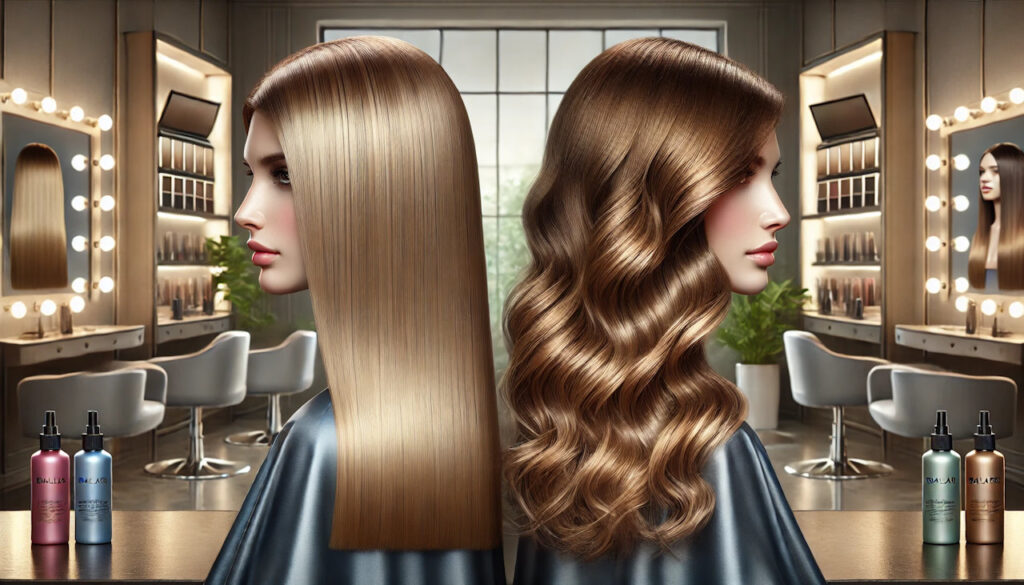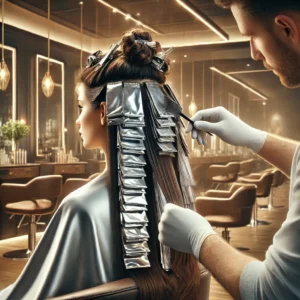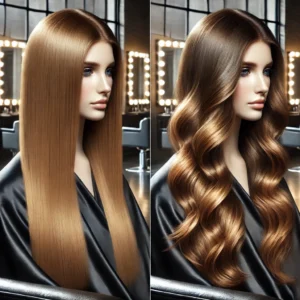Master the Art of Choosing: Foiling vs. Balayage Hair Highlighting Techniques
In the realm of hair transformation, foiling and <a href="https://limitsofstrategy.com/brunette-hair-unveiling-its-gorgeous-allure/">balayage</a> stand out as premier hair highlighting techniques that can dramatically elevate your look. Each method is designed to enhance your hair with beautiful highlights, yet they differ significantly in application style and the aesthetic results they produce. The foiling process involves wrapping selected hair strands in foil after applying a lightener or dye, allowing for exceptional precision in highlight placement. This technique is particularly favored by those who desire strikingly defined and vivid results, making it a popular choice for transformations that require a polished touch.
The meticulous nature of foiling results in a refined and elegant hairstyle, ideal for individuals seeking a bold makeover or dramatic contrast against their natural hair color. On the other hand, balayage presents a more artistic approach, where the stylist paints color directly onto the hair, focusing mainly on the mid-lengths and ends while preserving darker roots. This technique creates a natural, sun-kissed effect characterized by seamless transitions that typically require less frequent maintenance. Consequently, balayage is an appealing option for those who prefer a relaxed, lived-in style that evolves beautifully over time while maintaining a fresh appearance.
Grasping these key differences is crucial for making an informed decision that aligns with your personal aesthetic preferences and the practicalities of your daily life.

Key Considerations for Selecting Between Foiling and Balayage Techniques
- Foiling entails wrapping specific hair sections in foil to create sharp, uniform highlights, while balayage utilizes a freehand technique, resulting in a more organic, sun-kissed appearance.
- Foiling provides advantages such as consistent and controlled results, effectively lightening hair shades; however, it may lead to visible regrowth and can create a more structured, less natural look.
- Conversely, balayage is celebrated for its low-maintenance quality and seamless blending with your natural hair color. Nevertheless, it may present challenges like uneven color distribution and the need for more frequent touch-ups.
- For individuals with dark, thick, or coarse hair, foiling can be particularly beneficial if you desire a striking, high-contrast effect.
- In contrast, balayage is often more suitable for fine or thin hair, providing a subtle, blended effect that minimizes the visibility of regrowth.
- To keep foiled highlights vibrant, using color-safe products, limiting excessive heat styling, and scheduling regular touch-up appointments with your stylist is crucial.
- For balayage, employing color-safe products, reducing sun exposure, and having regular toning sessions with your stylist will help sustain the freshness and vibrancy of your look.
- When deciding between foiling and balayage, evaluate your aesthetic preferences, hair type, maintenance expectations, and budget to make the most informed choice based on a solid understanding of the advantages and disadvantages of each method.
 The Upsides of Foiling: Why It Remains a Popular Choice
The Upsides of Foiling: Why It Remains a Popular Choice
Foiling offers several compelling benefits that make it a preferred option for those seeking striking and vibrant highlights. The most significant advantage lies in its precision; each hair section is meticulously wrapped in foil, allowing for accurate color application precisely where it’s desired. This degree of precision is especially beneficial for individuals with darker hair who wish to achieve substantial lift or contrast without sacrificing quality.
In addition to its accuracy, the uniform appearance achieved through foiling makes it an excellent choice for anyone desiring a polished and sophisticated finish. However, it’s vital to consider the potential downsides associated with this technique. The foiling process can be time-consuming, often requiring several hours, particularly for those with long or thick hair. Furthermore, the foils can trap heat, which accelerates the lightening process and may lead to hair damage if not managed properly. If you maintain a busy lifestyle or prefer a more effortless hair care routine, you may find that foiling necessitates more maintenance than you are willing to commit to.
Understanding the Benefits and Drawbacks of Balayage
Balayage brings a wealth of advantages that appeal to those seeking a more natural and effortless hairstyle. A standout feature of this technique is its low-maintenance nature; since balayage highlights mimic the effects of natural sun exposure, they grow out gracefully without harsh lines or unsightly regrowth. This characteristic translates to fewer salon visits for touch-ups, making balayage an ideal choice for individuals with hectic schedules.
However, it’s crucial to recognize that balayage may not deliver the same intensity of contrast as foiling. If you are in search of bold, dramatic highlights, you may find that balayage does not offer the vibrancy you desire. Additionally, the success of balayage heavily relies on the stylist’s expertise and artistic skill. Therefore, selecting an experienced professional who can accurately interpret and realize your vision is essential for achieving your desired results.
Identifying Optimal Hair Types for Foiling Techniques
Foiling is particularly advantageous for certain hair types and textures. Individuals with thick or coarse hair can achieve eye-catching highlights that stand out distinctly against their natural base color. The precision inherent in foiling allows for targeted color placement, enhancing the hair’s natural texture and dimension. Moreover, those with naturally dark hair seeking significant lift or contrast often find foiling to be the most effective method.
Even individuals with fine or thin hair can benefit from foiling, as this technique can create an illusion of volume and depth. By strategically positioning highlights throughout the hair, you can add dimension that makes your locks appear fuller and more dynamic. However, if your hair is overly damaged or fragile, it’s critical to consult with your stylist before opting for foiling, as the process can be more taxing on delicate strands and may exacerbate existing issues.
 Ideal Hair Types for Balayage Techniques
Ideal Hair Types for Balayage Techniques
Balayage shines with its versatility and adaptability across a variety of hair types, making it a popular choice among many. If you have naturally wavy or curly hair, this technique can enhance your texture while providing an effortlessly chic, sun-kissed effect. The freehand application method promotes subtle transitions between colors, making it particularly suitable for individuals seeking a natural look that complements their hair’s natural waves.
Straight hair also benefits from balayage, introducing movement and dimension without overwhelming the base color. For those with fine hair, balayage can create the illusion of thickness by adding depth through strategically placed highlights. However, if your hair is very dark and you’re aiming for a dramatic transformation, be aware that balayage may require multiple sessions to achieve the desired brightness, especially in comparison to the more immediate results that foiling can provide.
Effective Strategies for Maintaining Your Foiled Highlights
Maintaining foiled highlights demands a commitment to ensuring your color remains vibrant and fresh. One of the most crucial steps involves using sulfate-free shampoos and conditioners specifically formulated for color-treated hair. These specialized products are designed to preserve your highlights while preventing fading and damage that can occur with regular cleansing practices.
Incorporating a deep conditioning treatment into your hair care routine at least once a week is also essential for keeping your hair hydrated, nourished, and healthy. Regular salon visits are vital to maintaining the integrity of your foiled highlights. Depending on your hair growth rate and the visibility of your regrowth, you may need touch-ups every 6 to 8 weeks. During these appointments, your stylist can refresh your highlights and ensure they blend seamlessly with your natural hair color. Lastly, proactively protect your hair from heat damage by using heat protectants before styling and limiting high-temperature exposure whenever possible.
Expert Guidance for Caring for Your Balayage Highlights
Caring for balayage highlights is generally more straightforward and requires less effort compared to maintaining foiled highlights due to their typically low-maintenance quality. To keep your balayage looking its best, opt for color-safe shampoos and conditioners that nourish your hair without stripping away its color. Choose products infused with natural oils or proteins to help maintain moisture levels while enhancing overall shine.
While balayage calls for fewer touch-ups than foiling, regular salon appointments remain essential for keeping your color fresh and vibrant. Depending on your hair growth rate and how much lightening you wish to achieve over time, consider scheduling visits every 8 to 12 weeks for a refresh. During these sessions, your stylist can assess your hair’s health and make any necessary adjustments to maintain that beautiful, sun-kissed effect you desire.
 Deciding Between Foiling and Balayage Highlighting Techniques
Deciding Between Foiling and Balayage Highlighting Techniques
Ultimately, your choice between foiling and balayage should reflect your personal style and lifestyle factors. If you are looking for bold, defined highlights with a polished finish, foiling may be the most suitable option for you. This technique allows for precise color placement and can create stunning contrasts that deliver a powerful visual statement.
Conversely, if you prefer a natural, sun-kissed look that requires minimal maintenance, balayage may be the perfect choice. This technique offers versatility and adaptability across various hair types while providing an effortlessly chic aesthetic that matures beautifully over time. When making your decision, consider your hair type, desired maintenance level, and overall visual goals. Both foiling and balayage have their unique advantages and challenges. By understanding these differences and evaluating your style alongside your lifestyle needs, you can confidently select the technique that best resonates with your aspirations. Whether you opt for the precision of foiling or the effortless allure of balayage, both methods can elevate your appearance and enhance your confidence.
Your Frequently Asked Questions Answered
What is involved in the foiling technique for hair coloring?
Foiling is a highlighting method that isolates specific sections of hair, wrapping them in foil before applying color. This process allows for precise highlight placement, resulting in a more uniform and controlled coloring effect throughout the hair.
What characterizes the balayage highlighting technique?
Balayage is a highlighting approach where color is hand-painted directly onto the hair to create a natural, sun-kissed effect. This technique enables softer transitions and a more blended appearance, ensuring highlights grow out seamlessly and naturally.
How do foiling and balayage compare to one another?
Foiling provides a more uniform, all-over color effect with precise highlight placement, while balayage achieves a more natural, sun-kissed look characterized by softer, blended highlights. Generally, foiling requires more maintenance due to visible regrowth, while balayage transitions more smoothly as it grows out.
Which highlighting technique is best for my hair type?
The choice between foiling and balayage largely depends on your desired look and maintenance preferences. If you enjoy uniform color with precise highlight placement, foiling might be ideal. Alternatively, if you prefer a natural, sun-kissed appearance with softer highlights and less visible regrowth, balayage is likely the better choice. Consulting with a professional hairstylist can provide personalized insights based on your hair type and desired outcomes.
Presented By: Hair Foiling
The Article: Highlighting Techniques: Foiling vs. Balayage Explained appeared first on Amitys Hair Salon.
The Article Foiling vs. Balayage: Key Highlighting Techniques Explained Was Found On https://limitsofstrategy.com
The Article Highlighting Techniques Explained: Foiling vs. Balayage First Appeared ON
: https://ad4sc.com
Comments are closed